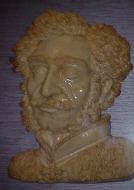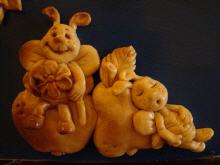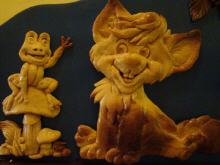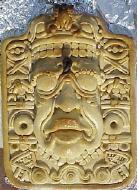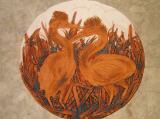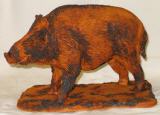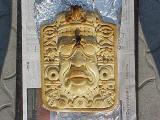Salt-ceramics
I became familiar with salt-ceramics while working at nursery school. I began to like this material because the basic materials are available in our kitchens and it's very easy to work with. Anyone can try to make salt-ceramics at home. It can be a nice, pastime for the family. The joy of creating may be experienced by both children and parents.
The dough can be prepared in many ways; I mix 1 kg (fine) vacuum salt to 1 kg flour, a table-spoon oil and 500 ml water. If I don't want to get a natural (raw bread) colour than I put some natural materials in it for colouring, for example cocoa, coffee, red pepper, turmeric.
You can work with artificial paints also as tempera wall paints, but be sure not to make it too wet. To make it more durable you can add wallpaper glue also, but note that the wallpaper glue makes the material a little bit rubber-like, this makes it a little hard to work with.
Use this material after refrigerating for one or two days. The completed figures can be dried out but I usually bake them because I think their colours are more beautiful like this.
While baking them keep the oven door open for the first one or two hours, if you warm them with a closed door they can swell up or crack. The dry material should be baked with a closed door at 150 °C depending on the oven until it has the colour of baked bread. If it becomes too dark in some places you can protect it from the heat with aluminium foil. Once cooled you can varnish it. I use a highgloss boat varnish or two components of Gemini. It's important to use as much varnish as you can because if the material gets wet (from steam) it can weaken so much that it can't hold its own weight.
Bake the dried dough on 150 °C (302 °F) in the oven by closed door as long as it has the colour of baked bread. If it gets burnt at some place you can protect it with kitchen foil from the heat. Once cooled down you can varnish it; I use high gloss boat varnish or 2-components Gemini. Apply the varnish generous because if the dough gets wet (damp) it will get weak and won’t hold its own weight.
Ceramic plant pots, vases, layered pots
Plaques, coat-of-arms
Trophies, ornaments, pendants
Household ware
